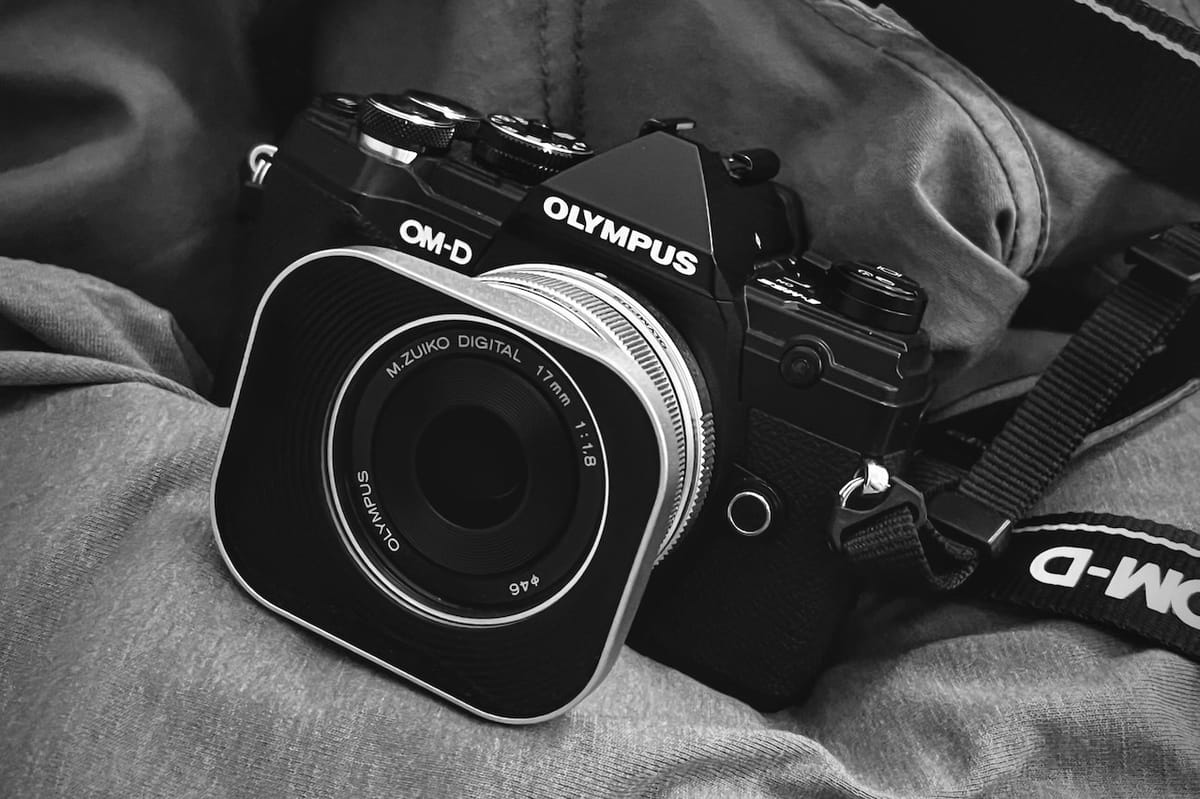Is the Olympus E-M5 Mark III still a good choice in 2025?
I originally bought this camera for my daughter. But since she moved on to other forms of art, I had to rescue this treasure from a miserable life on the shelf. Let’s start with a few technical highlights.

- 20.4 Megapixel Live MOS Sensor with TruPic VIII Quad Core Processor: Delivers high-resolution images and improved processing speed.
- Advanced 5-axis Image Stabilization: Provides up to 5.5 stops of shake correction, and up to 6.5 stops with compatible Olympus IS lenses, for sharper images and smoother video.
- Dual F.A.S.T. AF: Combines contrast and phase detection autofocus with 121 all cross-type points for fast and accurate focusing performance.
- 50 MP Tripod Hi-res Shot Mode: Captures incredibly detailed images by combining multiple shots into a single high-resolution image.
- 4K Cinema Video: Records high-quality video at 3840 × 2160 with 30, 25, and 24 fps at a bit rate of 102 Mbps.
- Vari-Angle Touch LCD: Offers flexible framing options with a fully articulating touchscreen display.
- Lightweight and Weather-Sealed Body: Compact and durable design that is resistant to dust and moisture.
With these specs, the E-M5 III doesn’t need to hide behind newer cameras. Realistically, I only have two gripes with it.
First, there’s no USB-C port. You can still charge the battery in-camera, but it takes around four hours for a full charge. That’s never been enough of an issue for me to buy the external charger, which only shaves off about 30 minutes. The battery life itself is decent—one of my typical photo trips isn’t enough to drain it completely. Faster charging would be nice, but overnight charging works just fine. The real downside is the cable. Who wants to keep an old micro-USB cable around?
The second issue is the audio input. While the camera does have a dedicated mic port, there’s a noticeable buzzing sound in almost every setting. It seems like Olympus cut costs on the preamp, which is a real shame because, otherwise, the E-M5 III would be an excellent lightweight vlogging or travel video camera. It has everything else—flip-out screen, great stabilization, and 4K video—but the buzzing is a dealbreaker.
Who is this camera for? Due to the lack of dedicated bird or animal autofocus, serious wildlife photography isn’t its strong suit. But for nearly everything else, the E-M5 III is a solid choice. Its weather-sealed body makes it great for outdoor shooting, even in the rain. The compact size means you won’t draw too much attention when doing street or travel photography. Autofocus is fast and accurate for both photo and video, and face detection works well. Of course, its face detection autofocus isn’t as advanced as what you’d find on a Sony or Canon, but portrait photography is still perfectly doable—you might just have a few more missed shots.
Is it worth it? All of that performance comes at a price. The E-M5 III still sells for around 600 EUR on mpb.com, which is just 150–200 EUR less than the newer OM-5. That’s not bad for such an excellent camera, but if you can find one cheaper on your local classifieds, it’s an even better deal—one that will keep bringing you joy in 2025 and beyond.

Oh, and don’t let anyone convince you that 20 megapixels isn’t enough. How large are you really planning to print? Do you typically view your photos on a 32-inch 6K Retina display from just a few centimeters away? Trust me, 20 megapixels is more than enough. Image quality isn’t just megapixels!
